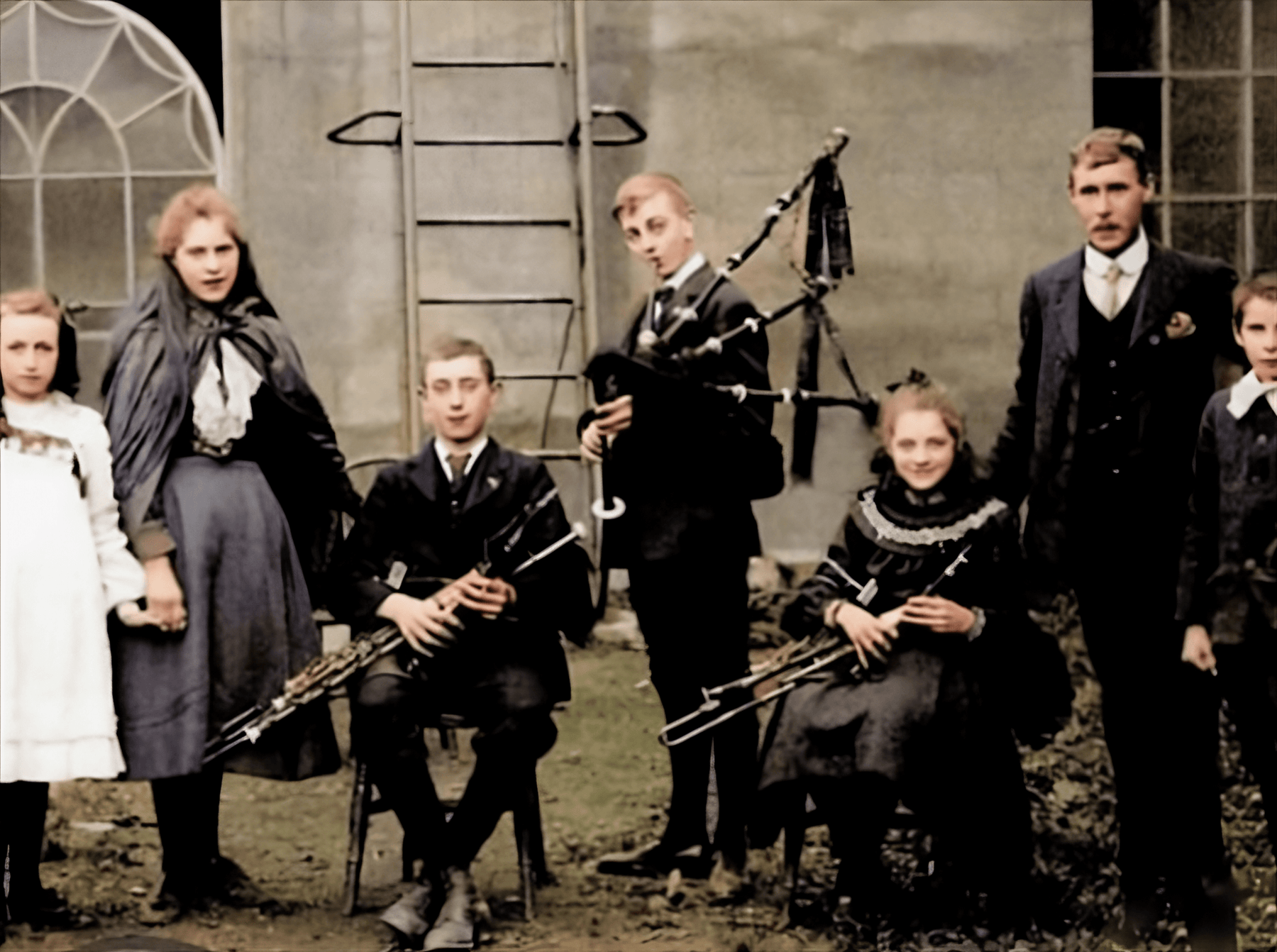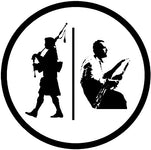
The History of Bagpipes in Ireland
The History of Bagpipes in Ireland

Bagpipes have been an important part of Irish culture for many centuries. This blog post explores their history, how they were used, and their importance in Ireland today.
Early History and Importance
In ancient Ireland, music was a big part of life. It was played at feasts, ceremonies, and even in battles. The Píobaí, or bagpipes, were popular among common people. The earliest pictures of pipers can be found on the High Cross of Muireadhach at Monasterboice, showing just how long bagpipes have been in Ireland.

From Derrick's Image of Ireland, made and devised anno 1578, published in 1581.
Bagpipes in the Irish Army
Bagpipes have also been a key part of the Irish military. The Army School of Music, founded in 1923, has been training pipers, drummers, and buglers for over a hundred years. Each military pipe band usually includes eight Irish war pipes, along with side, tenor, and bass drums. Although pipers play an important role, they don't get extra pay for their music and still have to do regular army duties.

The Irish Army Pipe Band on duty with the UN - 1960's, Congo, Africa.
Schools and Learning
Ireland's dedication to teaching traditional music is clear through its schools. The Municipal School of Music in Dublin and the Cork Municipal School of Music have been teaching students about Irish warpipes for many years. These schools help keep the tradition of playing bagpipes alive.
Éamonn Ceannt and His Famous Performance
One of the most famous moments involving Irish bagpipes was when Éamonn Ceannt played for Pope Pius X in September 1908. Ceannt, a well-known Irish war hero, was part of a group of 200 Irish athletes and pilgrims who traveled to Rome for the Papal Jubilee. Ceannt was invited to play the bagpipes for the Irish athletes during an international sports competition in the papal gardens.
Ceannt's piping gained a lot of attention. He played the pipes everywhere the Irish group went, starting from the docks in Dublin. He was accompanied by another piper, Pádraig Breathnach. When the Irish pilgrims met the Pope, Seán T. Ó Ceallaigh spoke to the Pope in Irish while Ceannt played the pipes. A memorable moment occurred when Ceannt discovered a hole in his bagpipes just before playing for the Pope. Breathnach's pipes saved the day, allowing Ceannt to perform "Wearing of the Green" in the Consistorial Hall of the papal palace.

Éamonn Ceannt with his bagpipes early 1900's
Revival and Modern Times
In the mid-20th century, people started getting more interested in traditional Irish music again. For example, in 1945, Professor Aloys Fleischmann held a special concert featuring Irish war pipes. This event showed that bagpipes could be used in many different types of music, not just traditional or military.
National Collections
The National Museum of Ireland has a large collection of musical instruments, including many types of bagpipes. Some of these bagpipes have historical importance, like those owned by Lord Edward FitzGerald, a figure from the 1798 Rebellion. These collections help us understand the history and development of bagpipes in Ireland.
Makers and Sellers
Ireland has several well-known makers and sellers of bagpipes. Businesses like Walton's Piano and Musical Instrument Galleries, McCullough's Music Salons, and T. Crowley & Son make and repair bagpipes, ensuring musicians can find

Traditional uniform of Irish Army pipe bands (note the Irish caubeen, the Irish coat of arms - harp with female and the saffron kilts).
Manuscripts and Folklore
Libraries like the Royal Irish Academy Library and the National Library of Ireland hold many old manuscripts of Irish music. These documents include lots of tunes for the bagpipes, showing their long history and importance in Irish music.

O'Farrell's Pocket Companion for the Irish or Union Pipes with both Scotch and Irish Tunes.
Conclusion
The Irish warpipes and bagpipes have been a key part of Irish culture for a very long time. From their use in ancient ceremonies and battles to their role in the military and music schools, bagpipes are an important symbol of Ireland's rich musical heritage. Today, many people and institutions work hard to keep this tradition alive, ensuring that the sound of bagpipes continues to be a part of Ireland's culture. The story of Éamonn Ceannt playing for the Pope is a shining example of the bagpipes' place in Irish history and their enduring charm.

Comments
Leave a comment